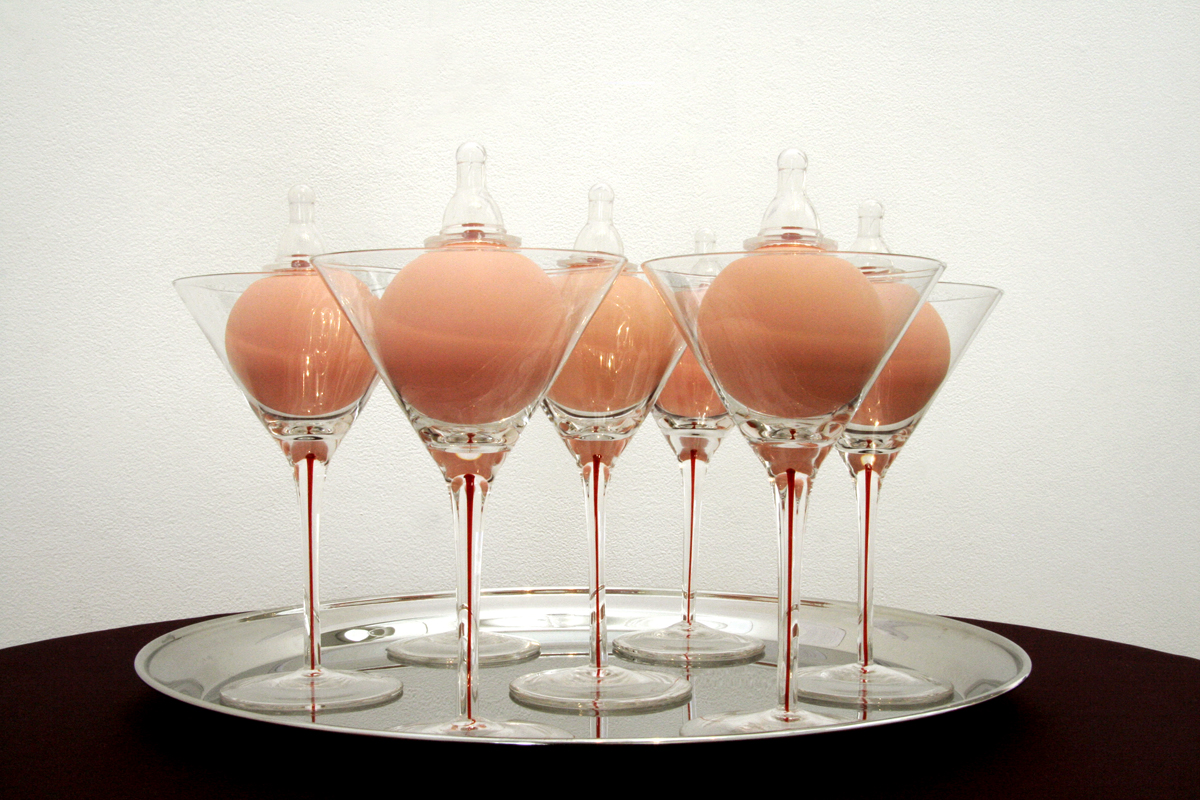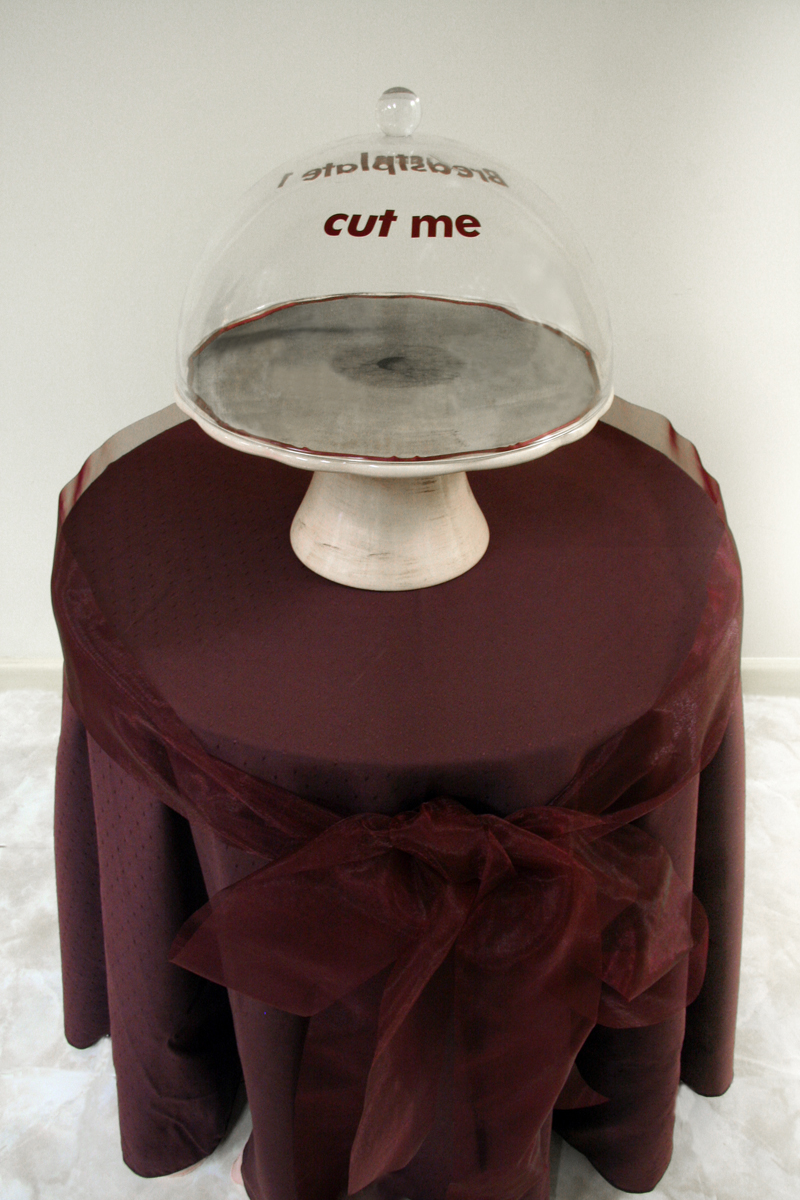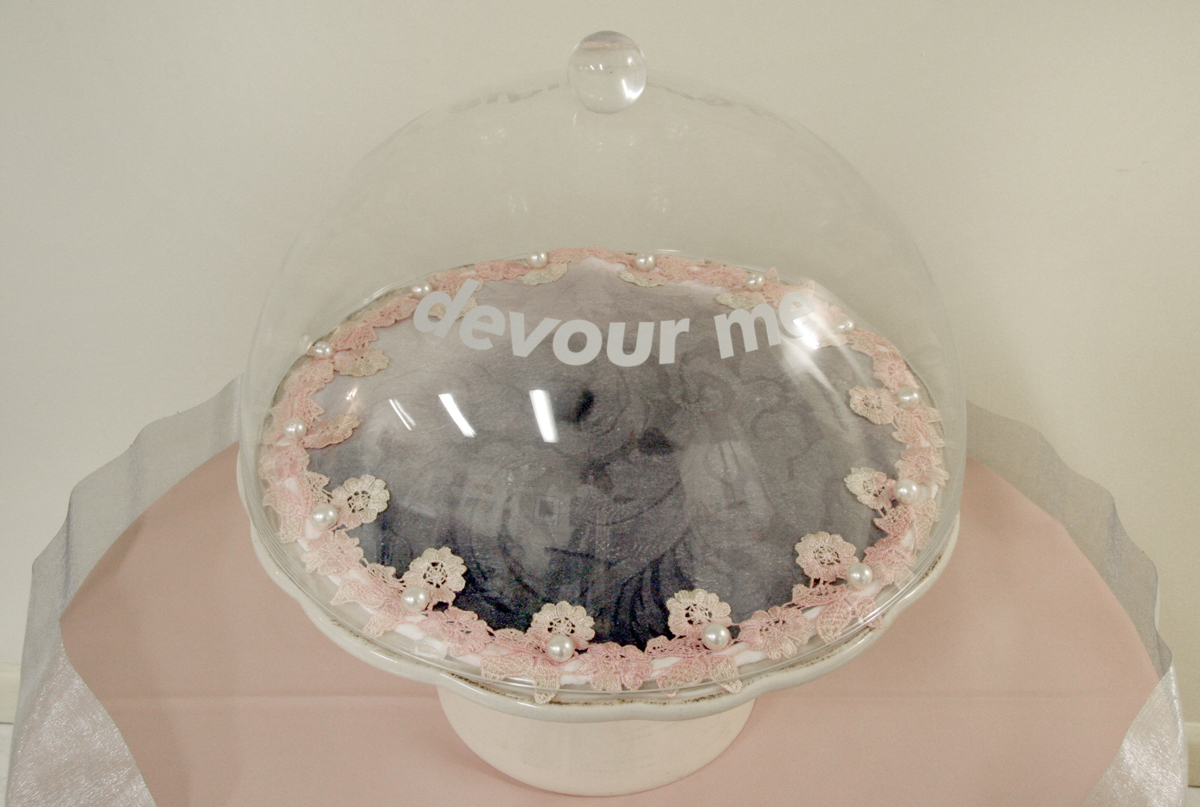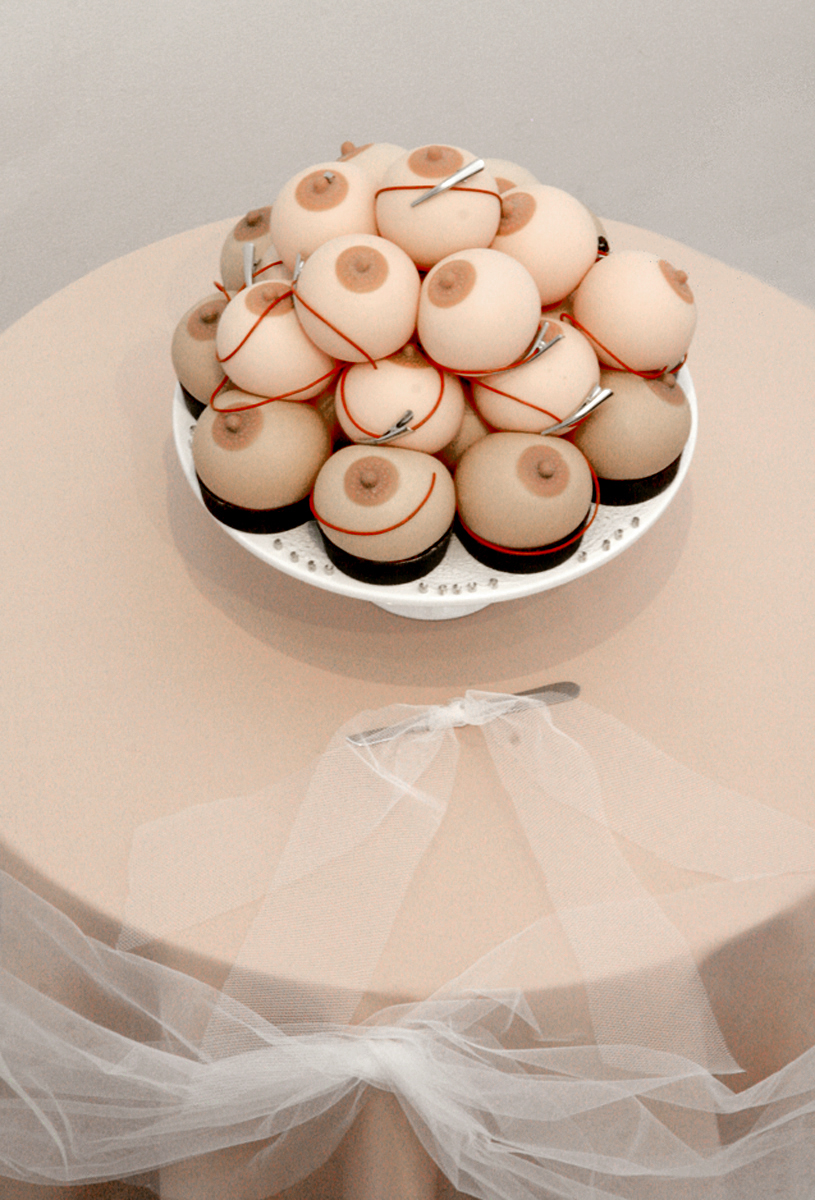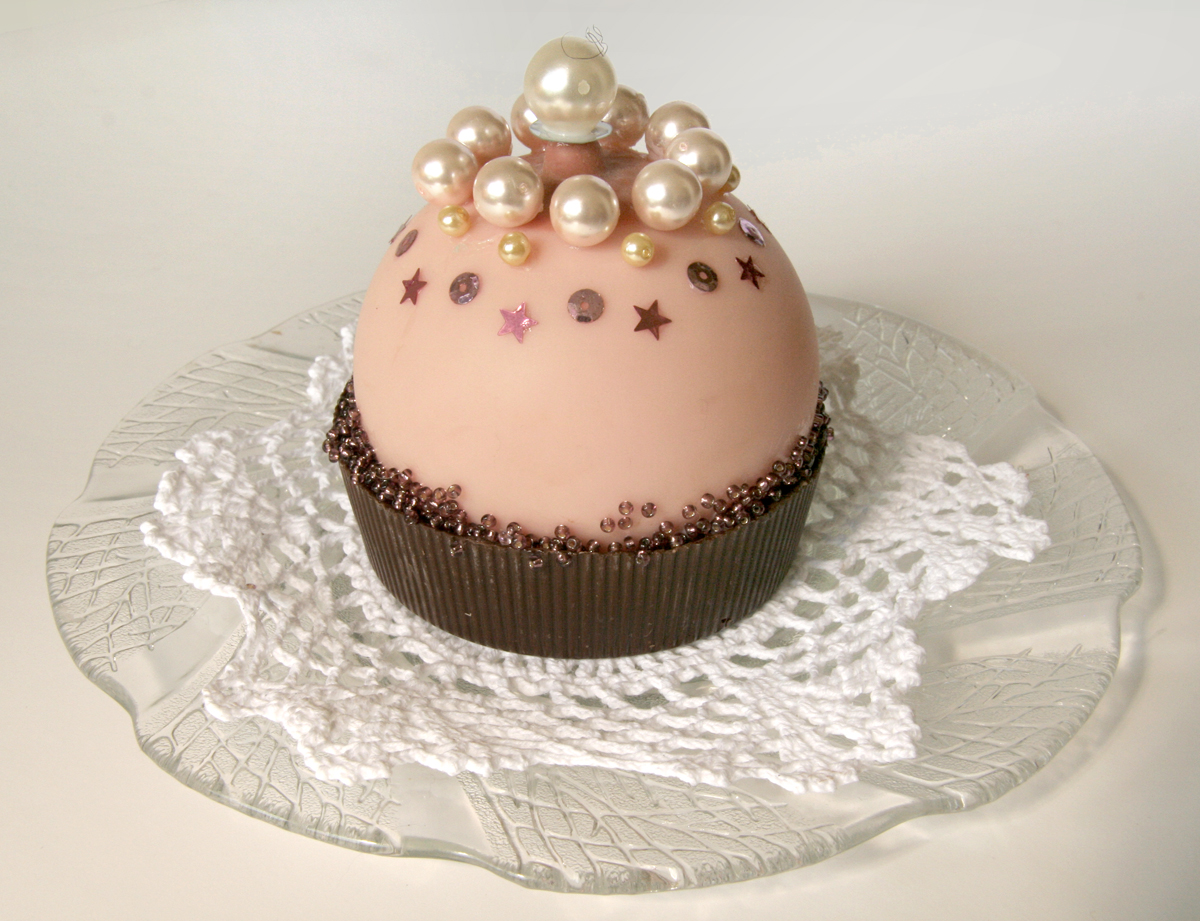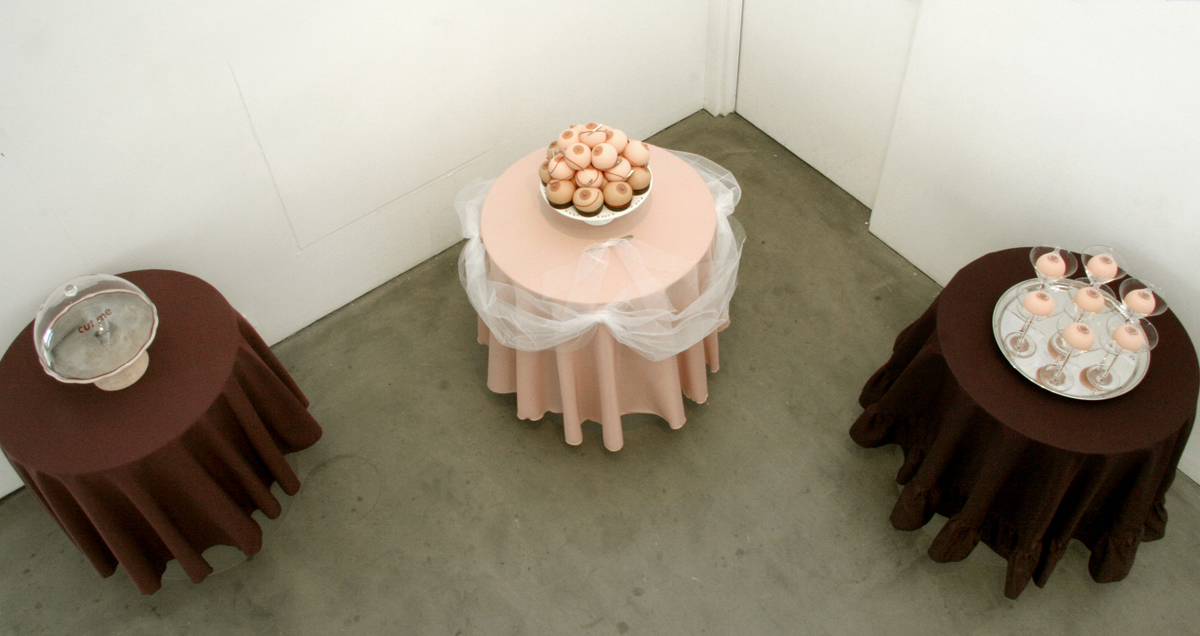Breast Plates evolved out of Kleemann’s personal experience with Breast Cancer in 2005, and her interest in the military language used to describe the many forms of cancer.
“A breastplate is a piece of armour that covers the chest or breast area, for protection during battle. Like the post-surgery bras I wore. Cancer is spoken of as a battle, won or lost. A body battle. There’s a war going on. A malignant invasion. A malevolent infiltration. The battle lines are drawn, the trenches dug, the evil rooted out with surgical precision. Shock and awe. I, and the landscape of my breast, have been forever changed.”
Prominent Yale surgeon and medical historian Sherwin B Nuland, MD acknowledges that of all the diseases surgeons treat, cancer is the one that they have specifically named ‘The Enemy’ and the central structure of the cancer cell is known as ‘the evil-eye nucleus’. He refers to breast cancer as the evil invader of women’s bodies and visualises cancer cells as “behaving like the members of a barbarian horde run amok – leaderless and undirected, but with a single-minded purpose: to plunder everything within reach.”1 His language is considered ‘apocalyptic’ by author Sally Cline.2
Susan Sontag notes that “disease is seen as an invasion of alien organisms, to which the body responds with its own military operations, such as the mobilising of immunological ‘defences'”.3 The language of chemotherapy and radiotherapy focuses on killer aggression – chemical and nuclear warfare that bombards, zaps, annihilates. Sontag argues that the abuse of military metaphors and euphemisms, common practice in medical situations, prevents patients from thinking clearly about their disease.
Kleemann has dedicated this work to the memory of three maverick women – British Photographers Jo Spence and Helen Chadwick, and American Writer Audre Lorde, ‘one-breasted proud black activist’.4
- Cline, Sally Lifting The Taboo. Women, Death and Dying, Little, Brown and Company, Great Britain, 1995, pp 201, 202
- Ibid p 202
- Ibid p 202 Quoted from Sontag, Susan Aids and its Metaphors, Allen Lane The Penguin Press, London, 1989, p 9
- Ibid p 205, 218
Mixed Media – ceramic plate stands, acrylic food covers, liquid emulsion photographs, tablecloths, haberdashery trims, laser-cut acrylic lettering, martini glasses, stress balls, fake pearls, stainless steel drinks tray, glass plate, doily, wooden tables, baby bottle teats
Exhibited:
2013 – Cut Me included in the online exhibition Dis(ease), Un(ease), Mis(ease), App(ease) curated by Dr Julie Joy Clarke, Honorary Fellow, Screen and Cultural Studies, School of Culture and Communication, The University of Melbourne on her blog: Anything But Human
2007 – Are YOU Being Served, ANCA Gallery, Canberra Australia
2006 – Surface Residue (group exhibition), Adelaide Central Gallery, Adelaide South Australia
